Affiliate disclosure: This post may contain affiliate links. Please see our Privacy Policy.
Cooking with apples often means a lot of apple peels find their way into the compost pile. Apple scrap vinegar is a way to get one more use out of something that would otherwise go to waste.
Make no mistake, homemade apple scrap vinegar isn’t real apple cider vinegar by any stretch of the imagination, but it is still tasty.
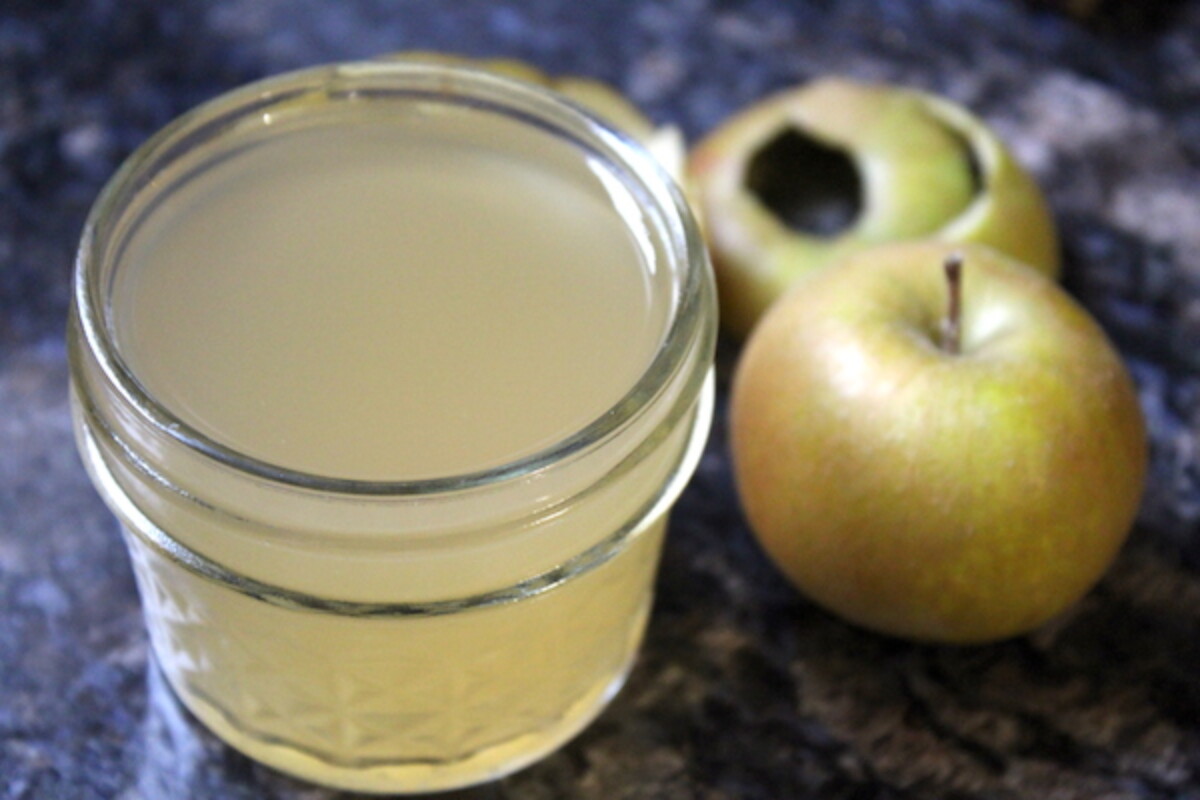
Table of Contents
When we had animals on our homestead, they always made neat work of the apple peels. Our angora rabbits had a particular fondness for them, and I’d sometimes find myself baking apple shortbread bars because the little guys really needed more apple scraps this week. Both sides were pretty happy with that arrangement.
Now that we’re raising two-legged kids instead of the four-legged variety, the apple scraps mostly feed our compost. It’s such a shame when they still have so much apple-y goodness left to give.
Though the scraps don’t have nearly as much sugar as the raw apple cider we press in the fall, they still have plenty of flavor. Add in a bit of extra sugar to feed the happy little vinegar culture, and you’ve got homemade apple-flavored vinegar.
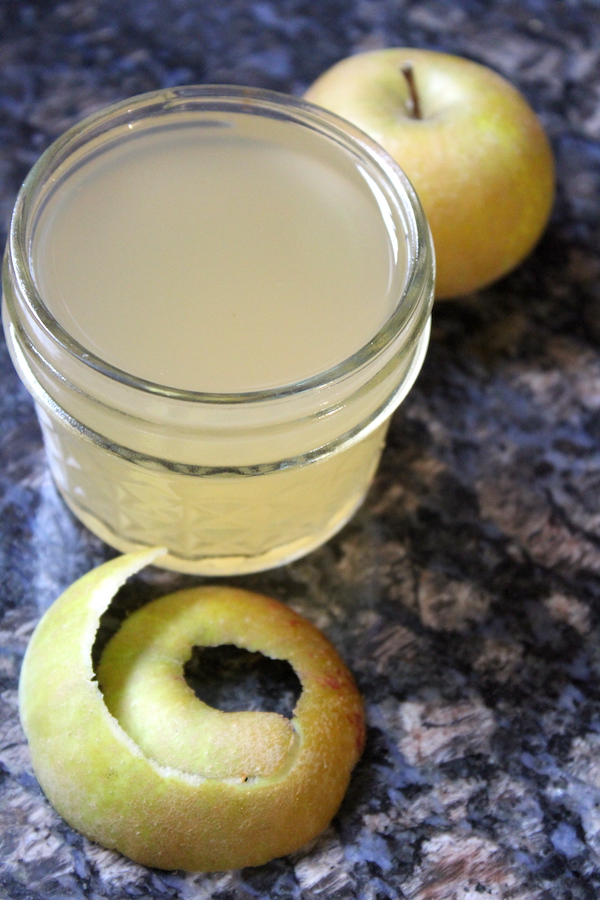
Is it true “apple cider vinegar?” Nope. To make apple cider vinegar you need apple cider, but the process is very similar.
If you want to make true apple cider vinegar start with pure raw apple cider without any preservatives. Let it ferment into hard cider on the counter, and then leave it a bit longer covered with a towel and it’ll turn from alcohol to vinegar.
If you want to speed up the process you can add a bit of raw cider vinegar with the mother to culture the alcohol into vinegar, but that’s not strictly necessary. The cultures are present in the air, and they’re the bane of hard cider makers that go to great lengths to prevent their homebrew cider from turning into vinegar.
Apple scraps require a bit more love and attention to turn into vinegar, but given that they’re going to the compost anyway, it’s basically free.
How to Make Apple Scrap Vinegar
Apple scrap vinegar starts with apple scraps. Obviously, anything on the outside of the apple will end up in the vinegar, so be sure to wash the apples well before you peel them, and use organic apples if at all possible.
Take the apple peels and cores and pack them into a mason jar. I’ve found that a single heaping apple pie yields about one half gallon mason jar full of apple peels. Be sure to leave an inch or two at the top of the jar as headspace.
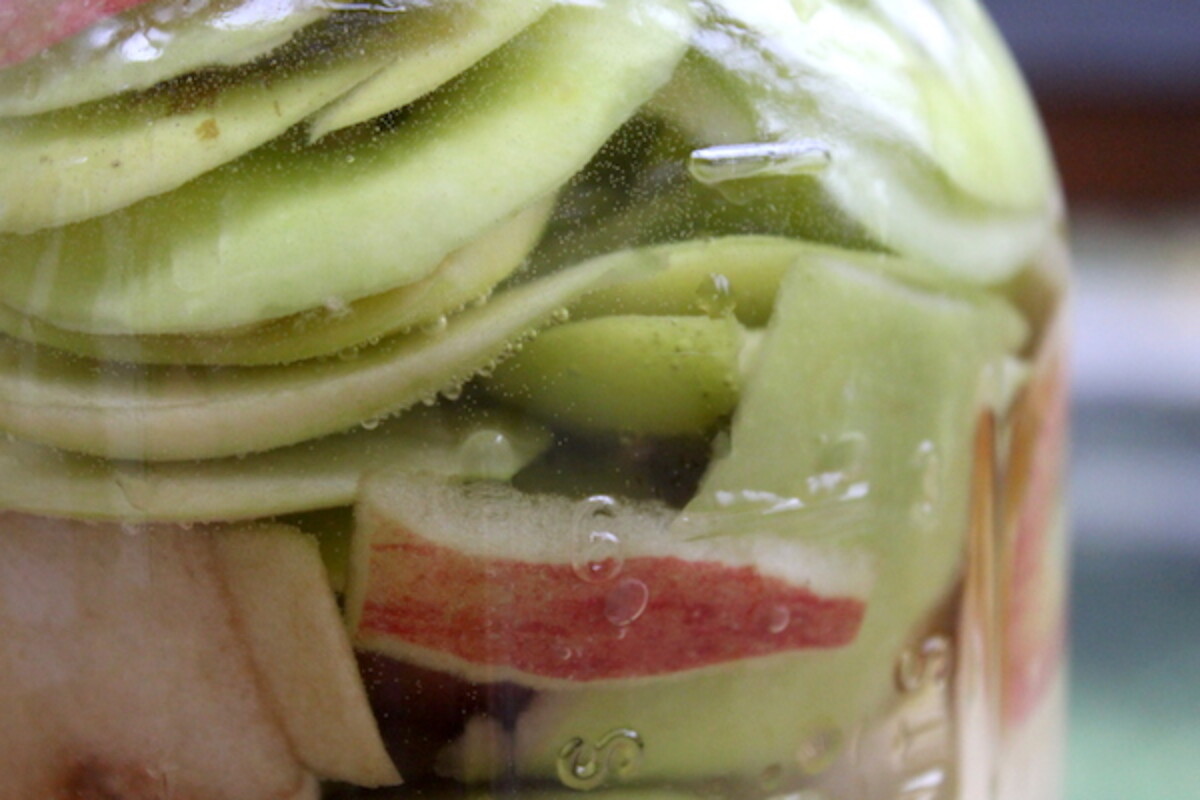
Dissolve a few tablespoons of sugar in a bit of water and pour the water over the apple peels. I use somewhere between 2 and 4 tablespoons of sugar per half-gallon jar of apple scraps. More sugar means more fermentable sugars, which will result in a stronger vinegar.
That only works to a point, and I wouldn’t use more than about 1/2 a cup of sugar to a half gallon. I’ve tried it without the added sugar and there’s just not enough sugar in the scraps and it’s always spoiled instead of fermenting properly.
Even though you are adding sugar, that’s all going to feed the beneficial bacteria and very little (if any) will be left at the end of the vinegar-making process. If it makes you feel better, use a natural sugar like honey, but keep in mind that it’s harder for the bacteria to digest and it’ll take longer to make the vinegar that way.
If you want a bit of extra insurance, add in a tablespoon or two of raw apple cider vinegar with the mother culture in it to help jump-start the ferment. This isn’t absolutely necessary since the cultures are present in the air, but it will yield more consistent results.
Once you’ve added sugar water to completely cover the apples, it’s important that the peels are weighed down so that they stay below the water line. This is very important, and any peels above the water line will mold. If you don’t use a fermentation weight of some kind you might as well just throw the whole mess away now and save your kitchen a stinky mess.
I’m using a glass fermentation weight from Mason Tops which is nice and sturdy, but any glass fermentation weight will work well. In a pinch, you could use a very small plate or ramekin that fits inside the jar.
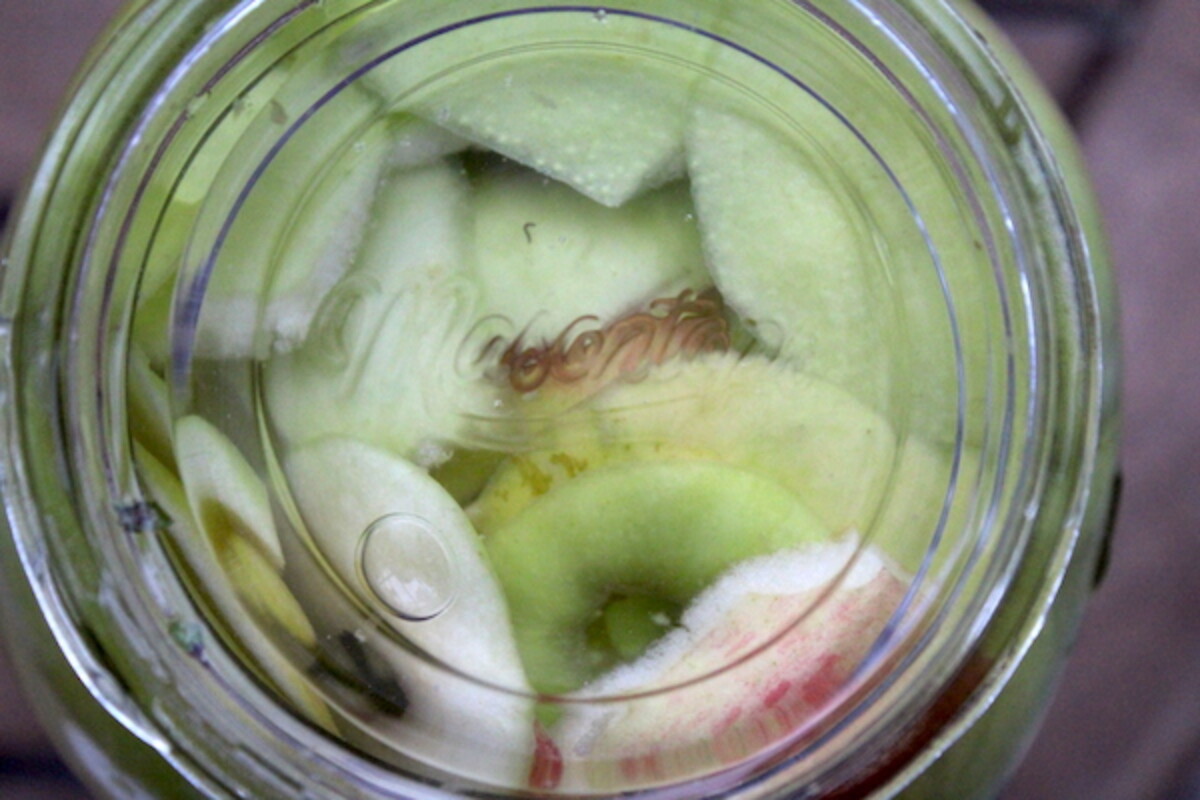
Cover the jar with a bit of cloth and secure it with a rubber band. The top needs to be open to the air, but that’s an invitation for fruit flies. A cloth napkin attached tightly around the top with a rubber band or even screwed on with a mason jar ring (lid portion removed) will keep the fruit flies out, but still allow your ferment to breathe.
Why not use a fermentation water lock like you do when making other ferments? When you’re brewing, a water lock is designed to keep outside bacteria, mostly the acetic acid bacteria that make vinegar, out of the ferment. Since we’re making vinegar, it’s important to let those little beasties have access to our ferment.
After about a week, you’ll begin to see a continuous stream of bubbles rising up through the apple scraps. The peels naturally have yeast on them, and those yeast are busy converting the sugars into alcohol and carbon dioxide.
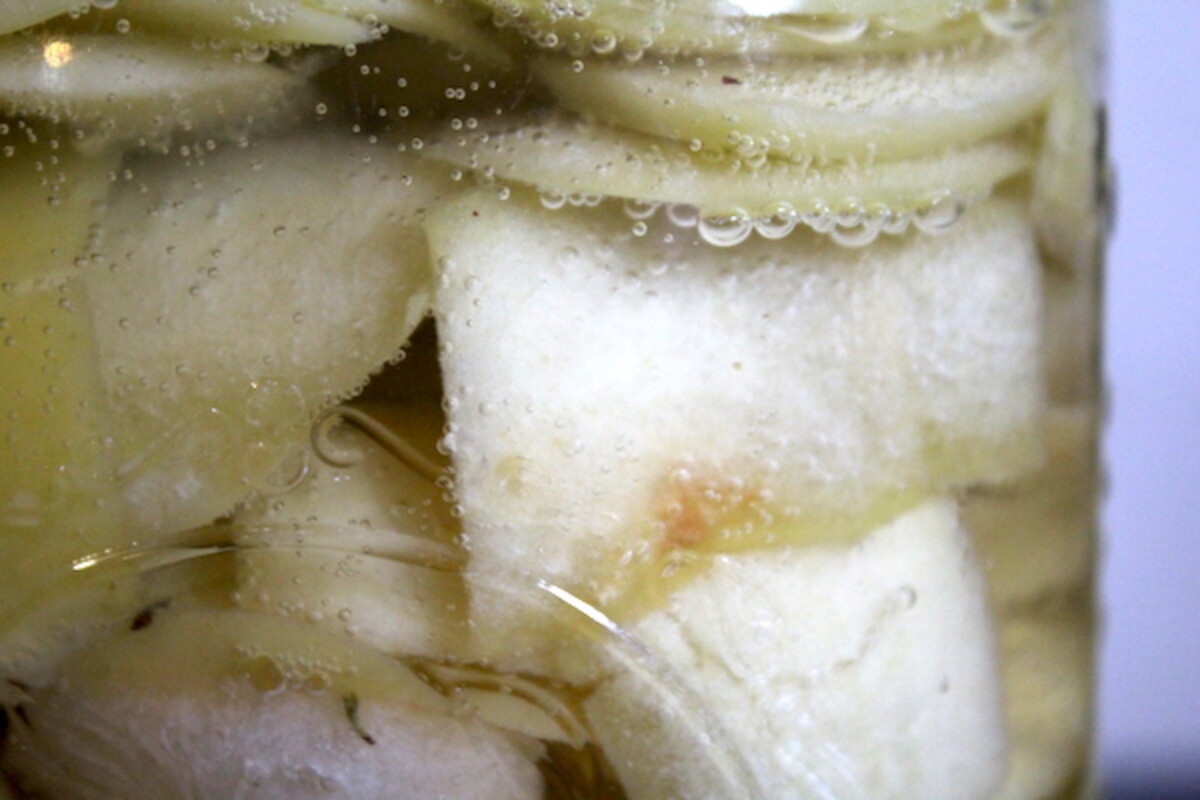
At this point, all the apple scrap vinegar needs is time. Allow the mixture to ferment for 3 to 6 weeks until it’s reached “done” according to your tastes. At 3 weeks the vinegar will be mild, but tart.
Give it more time and the acetic acid bacteria will keep working and it’ll become much stronger. If you’ve added a considerable amount of sugar at the start, it’s best to give it extra time to convert all that sugar into alcohol and then vinegar.
Over time you’ll notice the scraps begin to brown in the jar, and the clear water will slowly turn a light brown cider vinegar color. That’s all normal and expected.
If you take off the cloth that’s strapped on the top of the jar keeping fruit flies out, you’ll notice a floating mass on the top of the liquid above the fermentation weight. Congratulations! You have grown a full vinegar “mother.”
Vinegar forms a colony of bacteria that floats in a cellulose matrix at the top of a liquid. If you’ve ever made kombucha, it looks a bit similar to a kombucha mother as they’re closely related bacteria. When you see the “mother” floating at the top, that’s a sign of success.

Periodically check in with your vinegar to make sure that the mother is the only culture forming at the top, and that there’s no mold of any sort. With a fermentation weight this is much less of a concern, but if there are any tiny bits of mold scoop it off and make sure that the apple stay submerged.
Once the ferment is finished, strain the apple vinegar through a fine-mesh strainer and cap it up. Since it’s still a raw vinegar, it will continue to get stronger with age, but unless you test it there’s no way to know how it compares to store-bought vinegar in terms of acidity.
Keep in mind that this homemade vinegar will have a variable acidity level and should not be used for canning. Most “safe” canning recipes require vinegar that’s been standardized to 5% acidity per the National Center for Food Preservation. Homemade vinegar could be weaker, which may not produce a preserve that’s acidic enough to safely can.
Store the filtered apple scrap vinegar at room temperature, and like any vinegar, it should keep indefinitely.
More Food Scrap Recipes
If you’re looking to save more free food from the compost pile, you can also make tepache from pineapple scraps or save up your meat and bones in the freezer for homemade bone broth.
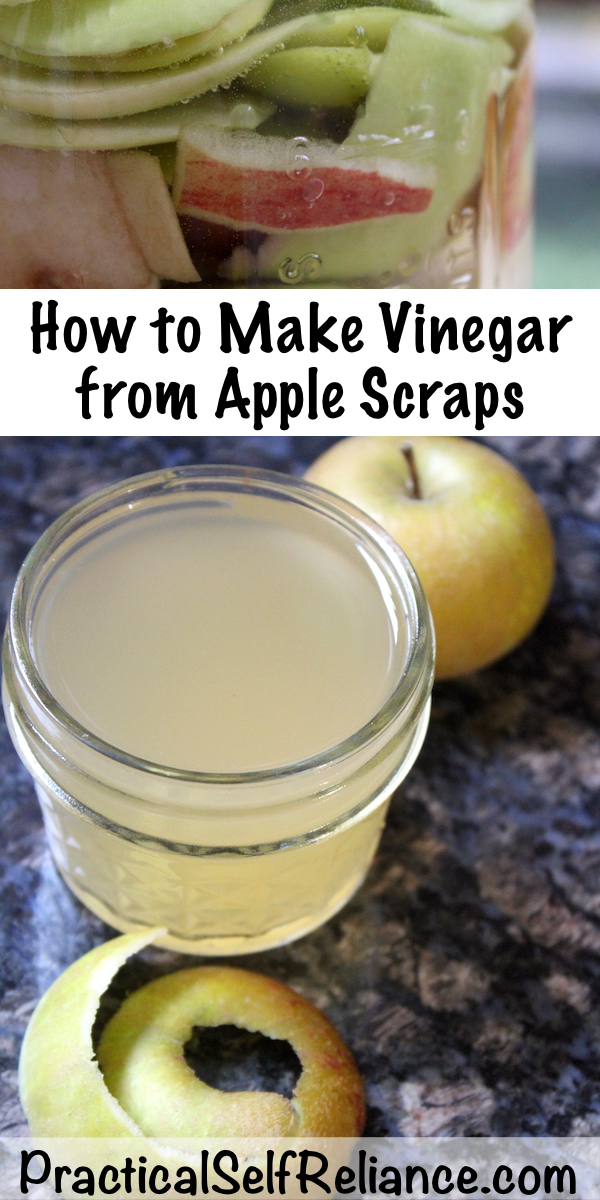

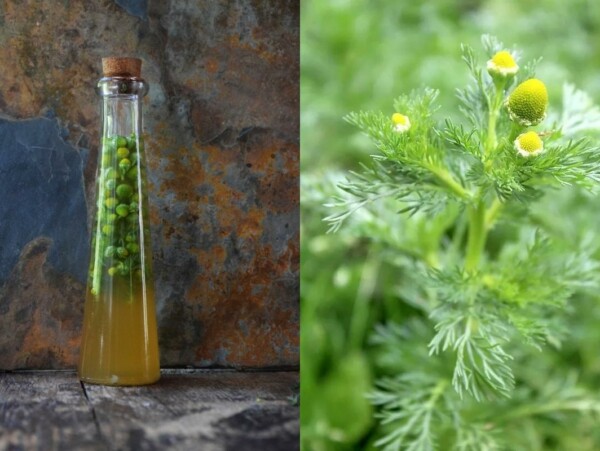

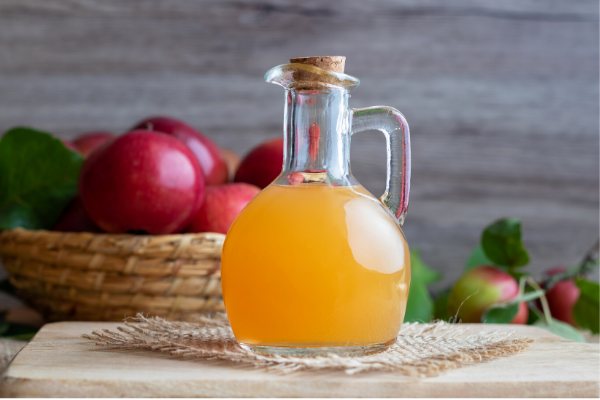










I made some ascrvin, left it for quite a bit, when I strained it the whole jar was jelled…..not had that happen before….is it still good? If not is there anything i can use it for?
Wow, that’s crazy! I had that happen with blackcurrants once, which have incredible amounts of pectin in them, but never apples. Apples are high pectin generally, though not usually as high as currants. Must be that your particular type of apple was really high pectin? Now how to use it, I’m not sure.
Why don’t you pasteurize the apple scrap vinegar like you would the apple cider vinegar?
You can, or you can leave it as is. Either way.
Can you also put in apple cores 🙂 thanks
Yes, you sure can.
Hi! Enjoy your recipes greatly!
Im working on my second batch of apple scrap vinegar and its not progressing like my first last year. I did add sugar and acv, weighted down with ferment weights, no mold, looks good, but no bubbles after 2 weeks. Do you think its temp related? That the only thing i can think of…I keep the house at 69, but I am in north GA and we are just getting through a bitter cold spell (by our definition 🙂 ) I was planning to use my new heated seed starting mats in that corner of my counter to see if that helps. Do you think temp is a component? should I throw this all away and start over? Or give it two weeks with the mats? thanks so much!
It definitely could be the temperature. I would still try it with the mats. If there isn’t any mold, I don’t think it will hurt anything.
Just wanted to pass on a little something fir the real beginner who may not have a glass weight, or who only has regular mouth jars. I used a teapot lid. It fits in my regular. Mouth mason jar. Most are food safe, but you could wrap it in something if you’re not sure. It worked, my vinegar is delicious.
That’s a great tip! I hadn’t ever thought of that before.
I make jars and jars of fruit scrap vinegar because this is what I use as a rinse for my laundry and also a rinse for my hair. I add essential oils such as lavender, rosemary & peppermint. You are a wealth of knowledge and ideas which match my google searches. You are much appreciated!
Thank you so much. So glad you’re enjoying the posts.
Do you add more water if the water evaporates at all ?
No, there is not need to add any extra water.
I didn’t see how much water to add to the sugar?
This is really a recipe with specific measurements, it’s more of a technique. I would just use enough water to dissolve the sugar and then you can top the jar off with more water as needed.
I’m curious if the mothers can be used like scobys to make new vinegar? Like if you transferred them to a new bottle of sugary water would they make vinegar again? Or perhaps used with other inputs to make different kinds of vinegar?
I tend to leave mine in the jar but you can definitely add it to a new batch of vinegar to give it a bit of a jump start if you wish.
This is awesome, thank you so much for sharing this information! What is the “mother” and what can it be used for?
The mother is simply a form of cellulose that is created by the bacteria that produce acetic acid which is the acid that is present in all vinegar. I usually don’t do anything with my mother and just leave it in the bottle with the vinegar. Sometimes the mother is not a solid mass but more like little floaties. In that case, I simply shake the vinegar before using and use it along with the vinegar. You can take some of it and add it to new batches of vinegar to give them a kick start. I have heard of some people feeding extra mothers to their chickens. Apparently they really like them a lot.
Hi! Thank you for the wonderful “how to”. I made two jars of apple scrap vinegar. Both made jelly like substances on top. One is clear-ish and the other is a bit more white. Are they both mothers? When you strain and bottle the vinegar, what do you do with the mother? Thanks for your help!
Yes, it sounds like the mother. I personally would keep the mother in with the vinegar when you bottle it.
Thank you!
I followed the recipe and did three half gallon jars. I just smelled of them and 2 of them have an ammonia smell. Tthe other smells great. Are the ammonia jars bad? Also, the mother in my jars is more of whitish tan and not pinkish brown like your picture. Hoping its not mold, but a true mother. Any suggestions. Thanks in Advance.
The mother can be all manner of colors, so I wouldn’t worry about that. Usually it picks up colors from the liquid its fermenting in, and if your apples have pink skins then it’ll be more pink. In red wine vinegar it’s a blood red, etc.
The fact that it’s different in two of your jars is strange…assuming you used the same input in all the jars. If it’s three different batches made with different ingredients then them being different is totally normal. If it’s all the same batch…then that’s odd and I’m not sure what to say there.
As to the smell, that’s not a problem I’ve had, but I did a bit of research and it looks like there are some more intermediary steps in fermentation and before it’s done it’ll put off some strange smells.
I’d give it more time and smell it again.
Mold is usually really obvious, like fluffy on the surface above the water line. Mold doesn’t happen below the water line, as it needs air contact. It only really happens if you have solids in there that float and are in contact with the air, and then the solid chunk (like a piece of apple) is what’s molding. In that case, just remove it as soon as you see it.
The other common problem is kahm yeast, which is not harmful and more of a cosmetic thing. There’s more about that here: https://www.nwferments.com/prevention-and-treatment-of-kahm-yeast
Miss Ashley
I have a question on the size of the SCRAPS Would it be better or Worse if I chopped or ground
the scraps before putting them into the jar and adding the water and sugar, I’m thinking More surface area.
what do you think, Yes more work, but will it be worth the extra work ?
I actually find that bigger pieces work better as they are easier to keep under the liquid. The small bits will tend to float to the surface of the water and develop mold.
thanks now I know what is best.
You’re very welcome.
What a fantastic how-to, thank you! I have tried to make apple scrap vinegar on two other occasions with poor results. Over the weekend we spent $6 on 42 lbs of ground apples from a local orchard here in rural NH. We made 12 quarts of apple sauce from the apples & saved the scraps for this very purpose! I followed your instructions, adding ACV to each jar as an insurance policy, & I have very high hopes for a good turnout this time. Thank you! 🙂
Awesome, I hope it works out for you!
It did, YAY! Thank you! I even ended up with a vinegar mother on each & every jar! 🙌
Wonderful!
Thank you! This was very helpful. I’m trying to reduce plastic use and food waste so tried this last night.
You’re so welcome. I love making my own apple cider vinegar.
Thank you for all the tips. I made my own ACV several years ago but freaked out when I saw “the mother” on top. The blog I got instructions from didn’t say anything about that! I ended up using the vinegar for my chickens, but was afraid to use it for my family. Now I know better! Thank you.